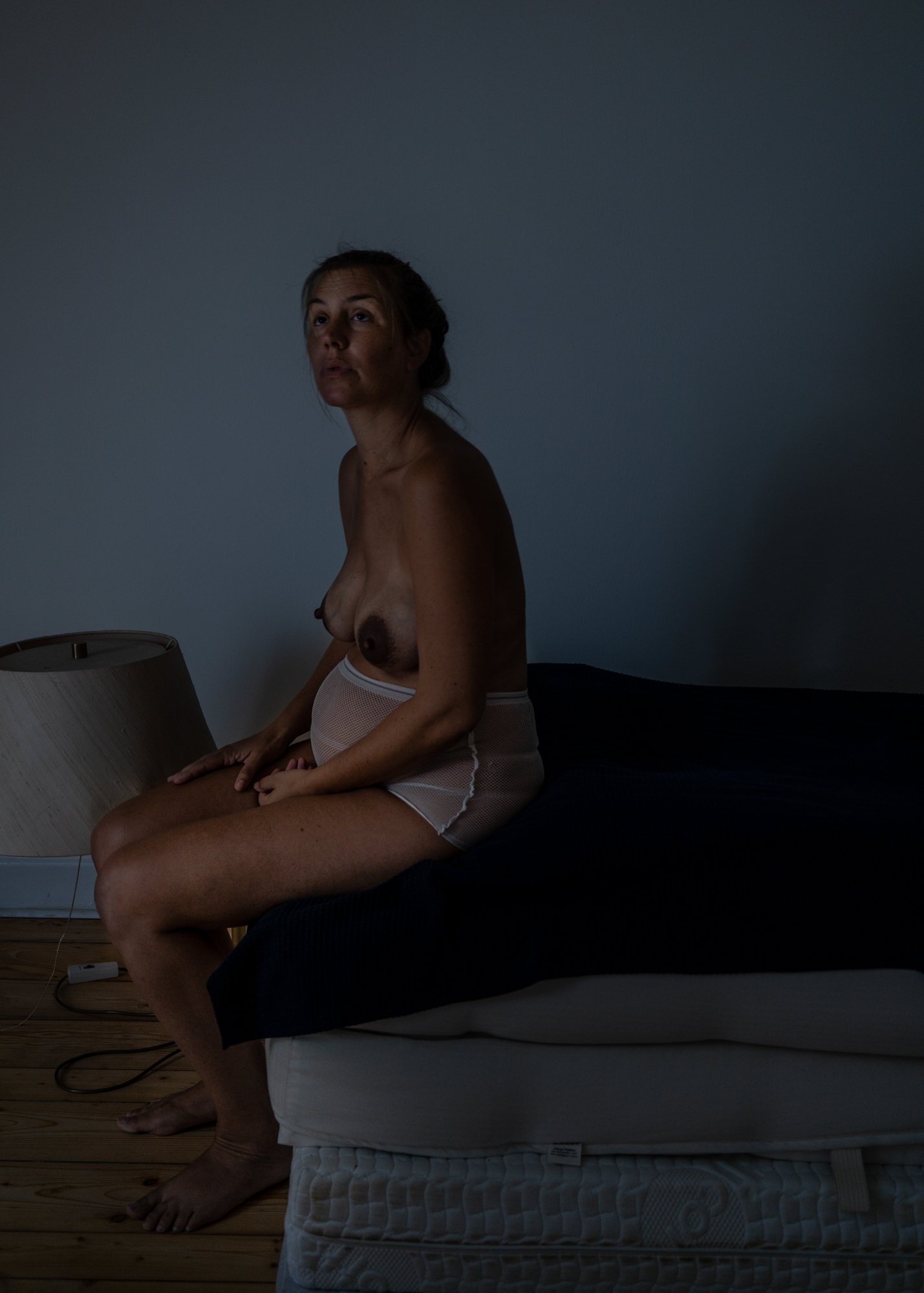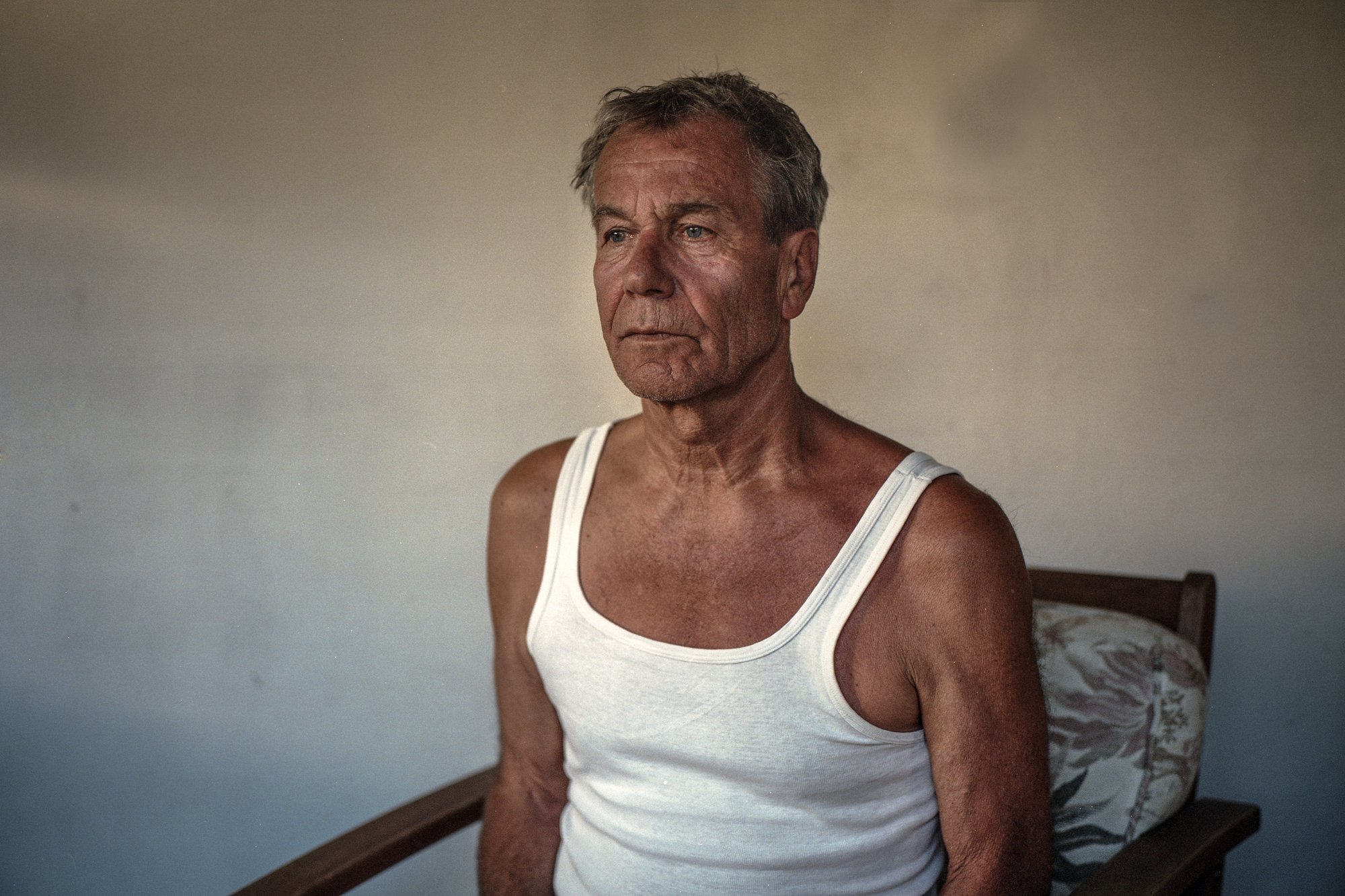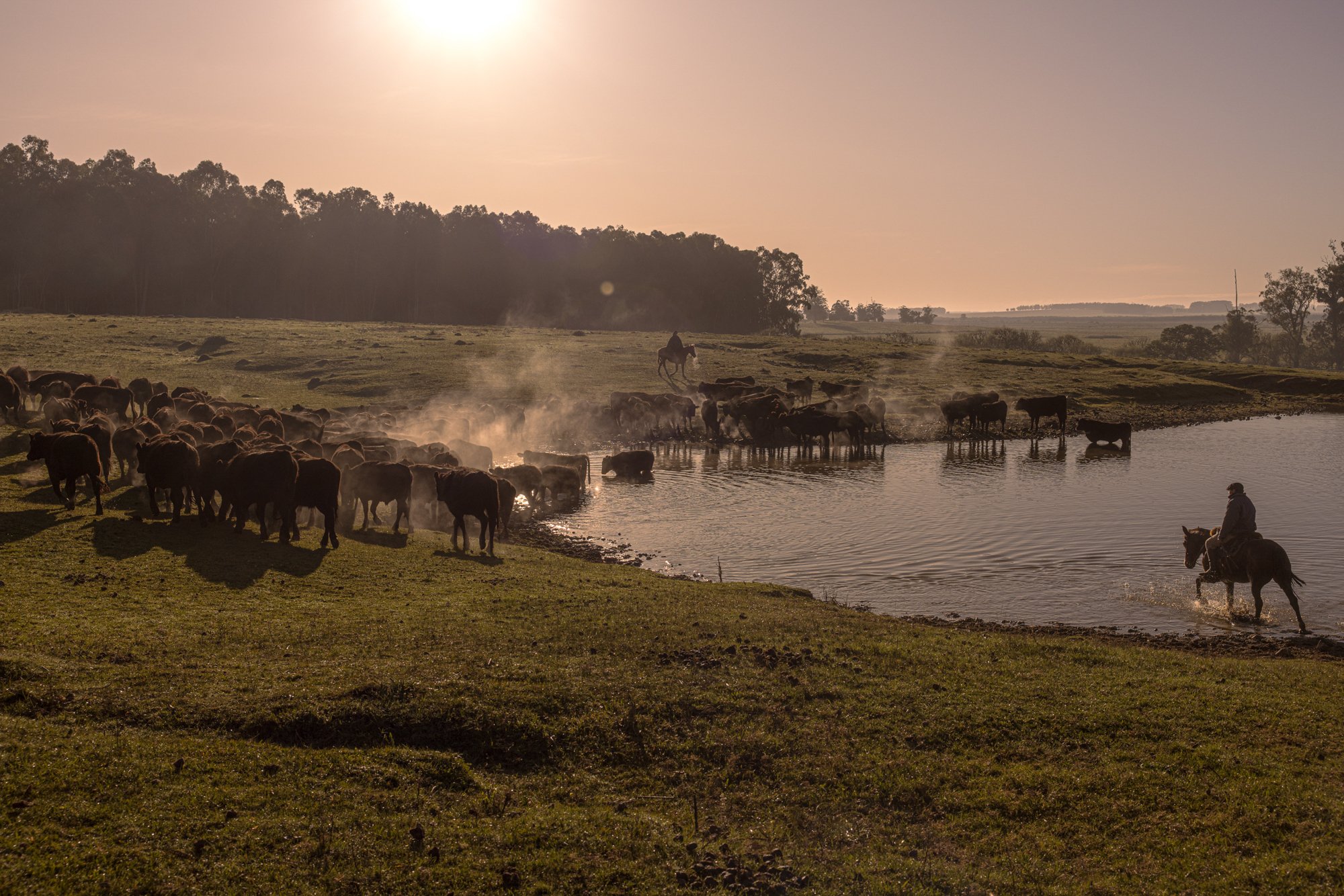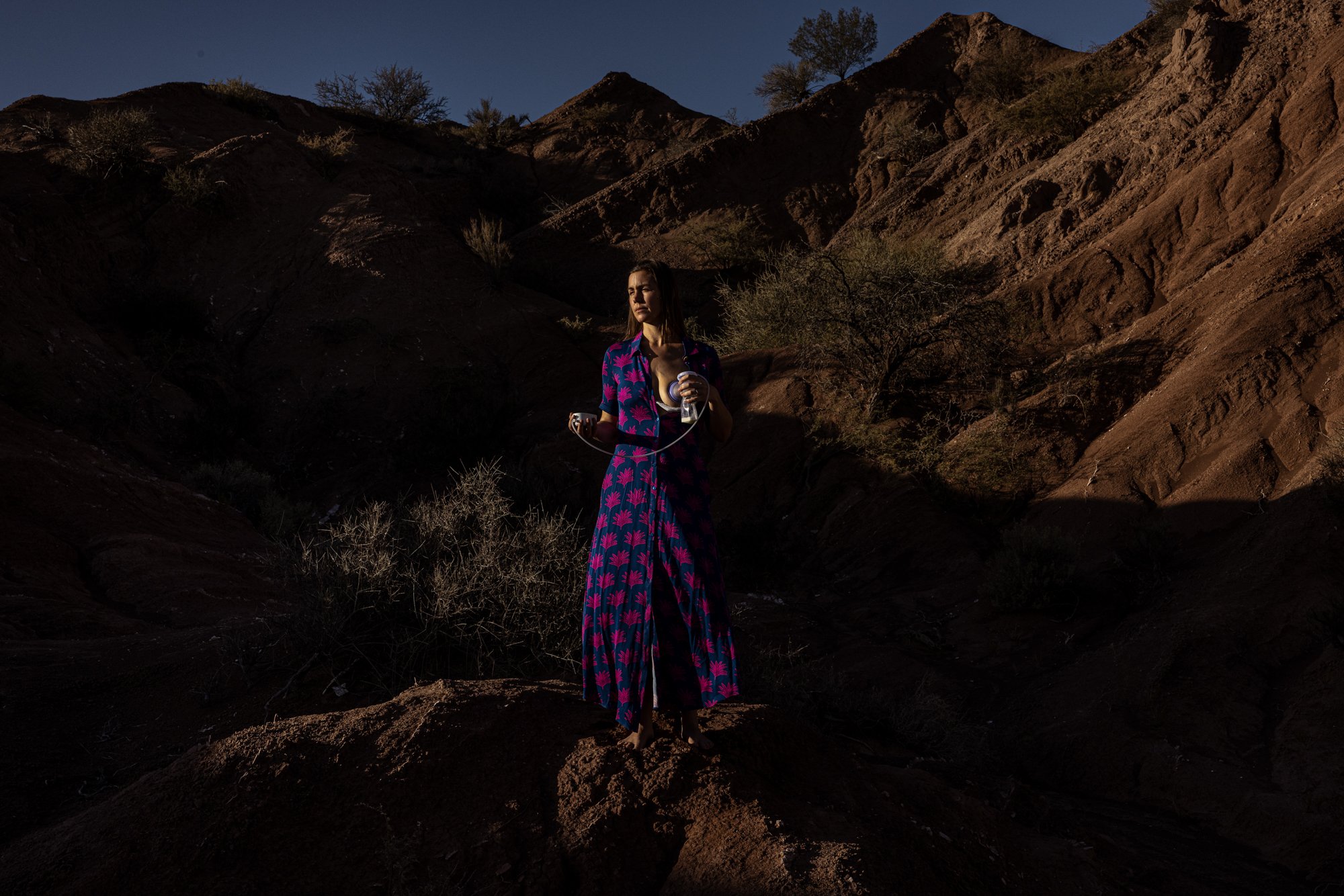PHOTO CONFESSIONAL: Sarah Pabst
A white fallow deer rests in the grand in a small wild park in Gummersbach, Germany, on August 30, 2021. Fallow deers were imported from Asia in the 14th century to Germany and are therefor not native. Protected by law, they can only be hunted with restrictions. White is a unusual color for a fallow deer, they are mostly brown. In ancient beliefs, a deer resembles the seasons - he jumps to the next season until he dies in winter and is reborn in spring.
IF YOU WEREn’T A PHOTOGRAPHER, WHAT OTHER PROFESSION WOULD YOU PICK?
If I weren't a photographer, I'd be a painter or maybe a filmmaker—something related. Art, images, and colors are a part of my constitution as a person.
A self portrait a week after giving birth to my son, on July 18, 2021, near Cologne, Germany. Together with the abrupt hormone change, the empty belly causes all kind of emotions. It feels as if the body is suddenly out of balance, the belly a big balloon without a function. One tries to find the new place in the world, searching to be reborn as well. Immense joy, sadness, fear, excitement - all those feelings interchange on high speed. And then, slowly, while the body recovers and settles, so does the mind. Step by step back to a new me.
WHAT HAS BEEN THE MOST CRUCIAL DECISION YOU HAVE MADE IN YOUR CAREER’s DEVELOPMENT?
The most crucial decision was to give up the academic career I was pursuing and dedicate myself fully to photography. The second most important decision was to say yes to the invitation to become part of Ayün Fotógrafas, a collective of eight female photographers united by Latin America in 2020. It has been a life-changing decision - there's nothing as the power of collaboration, companionship, and sisterhood.
AT WHAT POINT DID YOU FEEL YOU WERE A PHOTOGRAPHER, AND WHAT MADE YOU THINK THAT WAY?
Art and photography have been part of my life forever. My mother is a painter, so I grew up with colors and paintings. I started photographing as a teenager, developing my films in the darkroom with friends. Then I studied Arts - so I have been involved with photography for many years. But to dare to be a full-time documentary photographer - that took time, and it was a very windy road. I came into photojournalism through the back door. I didn't even have that way of life on the radar, but an editor saw my personal work at a competition, Marie Monteleone, and believed in my work. She gave me my first assignment in 2015 for Bloomberg. Four years later, Renee Melides of the New York Times gave me my first assignment for the New York Times. I owe a lot to these two women. Seeing my work for the first time in the Times made me think: I made it. That was 2019.
My husband’s face is digitally manipulated to hide his identity in Buenos Aires, Argentina, on Friday, June 9, 2023. Judge Andres Gallardo suspects that the city of Buenos Aires has created a database with photos of all residents of Greater Buenos Aires. Photographer: Sarah Pabst
HOW IMPORTANT IS RESEARCH IN YOUR WORK?
Research is fundamental in my documentary work. I come from an academic background, so research is part of every story. However, the research can be very diverse, and it differs for my autobiographical work - I often drift to paintings and less to background information.
IS THERE A PHOTOGRAPHER/ARTIST WHO IS A CONSTANT REFERENCE FOR YOU?
It's difficult for me to name only one. One of my first influences was Katrin Koenning, a German/Australian artist. I relate deeply to her multifaceted work, the topics, and her metaphorical, poetic documentary work. There are many more, though - my Ayün Fotógrafas colleagues - Tamara Merino, Anita Arévalo Gosen, Karla Gachet, Danielle Villasana, Mariceu Erthal, Johis Alarcón, and Andrea Hernández Briceño are a constant inspiration, both professionally as well as on a personal level. Antoine d'Agata was one of my first inspirations, and a workshop with him was a turning point in my career as I broke free of the limits and barriers I had set for myself in my photography. It was very liberating. Female photographers such as Graciela Iturbide, Maggie Stebber, Ami Vitale, and Lindsey Addario showed us a different possible way. Evgenia Arbugaeva for the light, silence, and patience visible in her stories. My Latin-American colleagues such as Federico Rios, Santiago Escobar-Jaramillo, and Maria Magdalena Arrellanas (that list could go on endless…there are SO many talented photographers in the global South), not only because of their incredible photography but also because they are amazing human beings. And many other contemporary photographers like Hannah Reyes Morales, Nanna Heitmann, and Kiana Hayeri. Many women to be honest. I think I'd need a whole page to narrow down a selection. That's also one of the most significant learning throughout my career - there's a place for everyone.
WHAT WOULD YOU NOT WANT TO PHOTOGRAPH?
I've photographed a wide range of topics, and my interests are very diverse. But there are moral limits - I'd always keep my (and the general) code of ethics. First of all, I am human.
Heavy rain falls on Buenos Aires, Argentina on April 27, 2020. Argentina entered a full lockdown on March 20 that endured more than four months.
WHAT EQUIPMENT DO YOU USE, AND WHAT IMPORTANCE DO YOU GIVE TO TECHNIQUE?
I use a Canon 5R with a 24-70 f2,8 for assignment work. I carry as little gear as possible; sometimes, I add a flash and a 70-200 or 100-500 if I do wildlife or politics. But I am also a camera nerd and like to play with different formats. Over the years, I have owned and tried a wide range of digital and analog cameras - every camera has its style. I have used everything from analog Linhof Plate Camera over Hasselblad 6x6, Mamiya 7, and Fuji 6x9 medium format to Fuji x100s and x100v as digital pocket cameras. My favorite cameras are the Canon 5R, Fuji x100s, and Mamiya 7. Technique is important - the camera is your brush for your painting, your color for your canvas - if you don't know how to use it, it won't do what you want to. I've played classical piano for years - you must know your tunes so it becomes a song. So, what camera you hold influences the outcome a lot. Each brand has its style, colors, and dynamics. A good photographer can take a good photo with whatever camera - even a phone - but the outcome will still differ with each medium. I shot the header photo for an assignment on Taylor Swift for The New York Times in Buenos Aires with an iPhone because I couldn't use a camera at the concert. I liked the photo a lot, but I struggled with the phone's slow speed in low light conditions during the assignment. So yes, you can take a great picture with whatever camera, but they will not all perform equally in the same conditions.
WHAT IS THE STARTING POINT OF YOUR CREATIVE PROCESS?
I am very emotionally driven in my personal work - I have to burn for what I work on; there has to be something that I want to solve, investigate, feel, or heal through the camera. The beginning of my creative process usually involves finding that emotional connection. Also, with assignment work - where do I, Sarah, connect to what I photograph? Is it the people, the environment, the light? In personal work, I read about motherhood, grief, climate change - whatever I want to photograph. I look at paintings, other photography works on the same topic, and movies; then, I write notes in small notebooks. Ideas of photos I want to shoot. Usually, I forget about all that, and weeks or months later, I look at those notes again, and my subconscious took the photos I wanted. Photography, for me, is like therapy. I am drawn to darkness and rays of light. There's beauty in that darkness.
My daughter grabs my husband’s shoulder in our sleeping room in Buenos Aires, Argentina on June 2, 2020. Lockdown has brought us closer together, a sudden break in our everyday rushing life.
HOW DO YOU DEFINE YOUR PHOTOGRAPHY WITH A # TAG ?
Uh, that's a tough question. Maybe #poeticdocumentary.
My father sits for a portrait in a white shirt. This photo is part of Zukunft, a personal project on family, memories and World War II. Taken on Fuji with a 6x9 negative.
HOW DO YOU DEAL WITH REJECTION?
I cry in the corner ;) But jokes aside, rejection is hard for all of us. But it's part of the way and the everyday. Initially, professional rejection made me want to give up a thousand times. Nowadays, there are fewer rejections and more yeses along the way, which makes it easier, but the rejections themselves feel heavier and more prominent. They often involve a lot of work (if it's a grant application, for example) or make you doubt yourself and hit your imposter syndrome (if it's a pitch or a competition…). I think the rejection I mostly dislike is ghosting - I can deal with no more than a no-answer. The most important thing to learn about rejection is not to take it personally, although it is about something very personal - our photography. To understand how grants, competitions, and newsrooms work. To celebrate the yes more and not just let them be the standard.
Patricia Nasutti, Ursula’s mother, sits for a portrait wearing a T-Shirt with her daughter’s counterfeit in her living room in Rojas, Province of Buenos Aires, Argentina, on April 9, 2021. On the wall are huge signs she takes to manifestations. 18 year old Ursula Bahillo was stabbed to death by her ex-boyfriend, 25year old police officer Matias Martinez. She had been their only child.
HOW DO YOU THINK YOU HAVE ACCOMPLISHED SUCH SUCCESS?
Persistence is the first word that comes into my mind. And patience. Accept that everything happens at the time you are ready for it. Work hard. I think what significantly shaped my career was that I lost my brother to sudden cardiac death in 2016. At that moment, I realized that I needed photography as a part of me for healing and transforming pain into something different. I love photography. But it also made me treasure life a lot - I became a mother shortly after, in 2017, and had a second child in 2021. Building a career and juggling family life is hard. I had to say no to a wide range of possibilities because I couldn't do it, time-wise, or I couldn't travel, or multiple other reasons. But caring less about the photography world and a little more about life has made me resistant. I cherish it when I am out working. I enjoy the time off at home, am super efficient, and work hard. I can function well when sleep-deprived. Being a mother and a professional photographer has added extra sensibility to my work and how I perceive the world. Coming from an Art world, I know personal work needs time to grow. Creativity needs time and nurturing moments. We can't always be productive if we want to create something meaningful. Then there are networks - I've mentioned our collective Ayün Fotógrafas before. I am today because of these incredible women—and other platforms such as Women Photograph and Foto Feminas. My biggest advice to young photographers is to find alike minds, bury the competitive thoughts, and build a network that will persist throughout your career and beyond. Find friends. Workshops like the Eddy Adams are also super helpful. Another important success point is building a good relationship with your editors. Be reliable and professional, always.
Uruguayan gauchos move a herd of Wagyu-Angus bull-calves on a chilly early morning through a lake on the El Alamo estancia in Velazquez, Uruguay, on Tuesday, June 13, 2023. A gaucho’s life is hard and very little romantic although there’s undeniable beauty in the landscapes and the steam that rises from the animals’ bodies.
Morning Song
HOW DO YOU APPROACH STRANGERS IN YOUR PROJECTS OR TO INCLUDE IN YOUR PROJECTS?
If I have the luxury of time, especially in long-term projects, I first talk, listen to them, and hear what they say. Observe. Ask how they'd like to be photographed. Then, the pictures. On assignments, I usually have the camera out so people know I am there to photograph. If I don't have the time or opportunity to talk before, I typically establish eye contact if necessary or observe if people are okay with me photographing. Also, I am very honest in my autobiographical work, and people can easily find out who I am. We ask a lot of the people we photograph, we photograph their joy, sorrow, grief, and hardship, and they barely know anything about us. I photograph myself like I do with strangers, so I can relate to how it feels to be exposed.
A pomegranate is cut in half in Buenos Aires, Argentina on June 4, 2020. Pomegranates are ancient symbols of fertility, frequently used in paintings.
Morning Song
IS IT COMMON FOR YOU TO QUESTION YOURSELF OR YOUR PHOTOGRAPHY?
I question myself and my photography daily. That's where the network, friends, and my therapist come in. The industry is changing, and often, you ask yourself why you do what you do if there's hardly a prosperous future; who am I to tell yet another story on motherhood on climate change? I often question my very personal approach to my long-term projects. It makes them hard to publish - they are very successful in grants and competitions, but I have a hard time having them published, and I very often doubt that. But it is who I am; trying to be someone else is never healthy. Also, it comes back to what I wrote above - everything at its time. Enjoy the ride.
Deers stand on a meadow in the afternoon sun in Gummersbach, Germany, on August 25, 2020. They are kept for sustainable meat production.
WHAT DOES IT MEAN TO YOU TO BE A WOMAN PHOTOGRAPHER? HOW HAS IT AFFECTED YOUR PROJECTS? AND YOUR APPROACH TO THE ART WORLD/ PHOTO-BOOK WORLD?
As a woman photographer, you have to work harder. You have to prove that you can on so many levels. Being a mother-women-photographer gets even more challenging; it comes with so many labels and restrictions that you have to work even harder. Same with books - my book is very personal, and not everybody can relate. Seeing that it is successful makes me twice as proud. The most important thing is to be authentic. Be who you are, photograph who you are, what you care about - don't try to be someone else. I am primarily interested in women-related projects, motherhood, and climate change - so that's fine. And always remember, as a woman photographer, there are fewer of us, so your voice matters a lot. 80% of the photography students are female, and only 20% of the professional photographers are female. How many of them are mothers? I don't know the statistics, but it's even less. It's hard. But it's worth it. We need to see the world through a very diverse lens.
Self portrait with a breast pump as tribute to the Difunta Correa in the San Juan province, Argentina, on Friday, June 3, 2022. In 1841, a young woman, Deolinda Correa, tried to cross the desert of San Juan with her baby, escaping violence and death. She died of thirst in the desert, but her baby miraculously survived on her breasts. The Difunta Correa turned into a Volk saint and thousands of devotees visit her sanctuary in Vallecito, San Juan, every year.
WHAT WOULD YOU SAY TO A NEW PHOTOGRAPHER WHO IS JUST STARTING OUT?
Follow your path. Build networks. Find friends. Don't let the rejections stop you. Be authentic. Take your time to build a substantial personal project over a long period. Take whatever photos you have to, to finance your way, especially in the beginning. Know your goals and accept that they might change over time. Don't be too competitive, enjoy the success of others as well. And have a life outside photography - friends, family, relationships - they matter.
ABOUT SARAH PABST
Sarah Pabst is a photographer and visual storyteller based in Buenos Aires, Argentina.
Her work focuses on women, human rights, and environmental issues. She also works on long-term autobiographical personal projects on motherhood, grief, and the interconnected relationship between humans and nature. Sarah is a National Geographic Explorer, and fellow and grantee of the Pulitzer Center on Crisis Reporting. She is a member of Ayün Fotógrafas and Women Photograph.
In 2022, she was a mentor for the Women Photograph Mentorship Program and commissioned for the EFT World Today EFT project by Obscura. In 2021, she published her first book, Morning Song (Raya Editorial), a deeply personal story on motherhood, lockdown, pregnancy loss, and love.
Sarah is a contributor to The New York Times and her work is regularly published in numerous international outlets such as National Geographic, Bloomberg, Time, Financial Times Magazine, Washington Post, Der Spiegel, Zeit, The Wall Street Journal and Le Monde. Her work was shown in different exhibitions worldwide, e.g. in Argentina, Germany, Greece, France, Brazil, and Mexico.
Sarah has received multiple awards, grants and recognitions, such as Photographer of the Year 2021 & 2023 (2nd&finalist), POYLatam, Lensculture Emerging Talent, POYInternational, PHMuseum Women Photographer Grant, National Geographic Emergency Fund, Festival della Etica, New York Portfolio Reviews, Eddy Adams Workshop and Voices Off Arles. Sarah owns a BA/MA in Spanish and Fine Arts.
self-portrait












